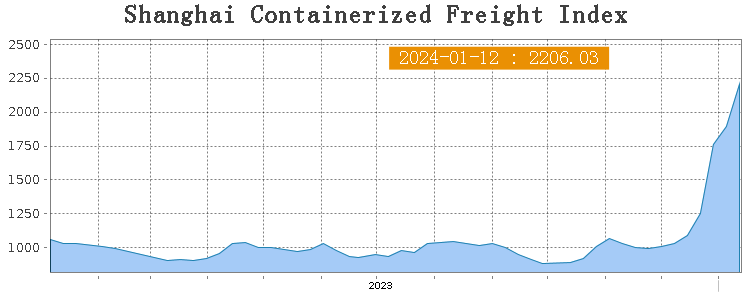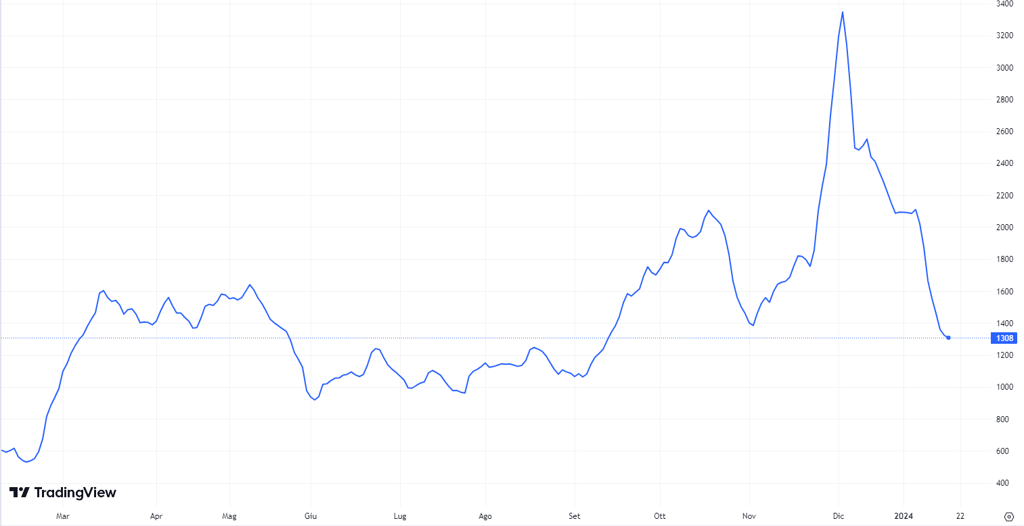Suez Canal: Shipping and Supply Chain Crisis
SUPPLY CHAIN INSIGHTS
1/19/20243 min read
Today, I'm writing about an extremely topical issue that has major repercussions on the world economy and consequently, direct repercussions on the operations of tens of thousands of companies.
We are talking about the missile attacks in the Suez Canal and their impact on the global supply chain.
These latest attacks are exposing the fragility of our trade routes, but at the same time, it raises the possibility of opening a dialogue on possible solutions, for a more resilient future!
The attacks are mainly taking place by Houthi rebels, these missiles targeting merchant ships crossing the channel show how this sea route is a vital artery of world logistics and trade.
Large shipping companies such as Maersk, CMA CGM and MSC have had to review their routes, opting to circumnavigate Africa. There are many concerns on several fronts.
As you can see from the SCFI index, which you can find below, the price per container has skyrocketed to double the previous month's value.
The growth was strongly driven by the "Europe (Base Port)" and "Mediterranean (Base Port)" units, which have a very strong weight on the entire index.


Looking at the classic BDI, we see that the trend has been extremely similar, since the start of the events, but there has been a much faster descent, compared to the SCFI.
Why do the two indices behave differently?
The increase in time and costs is reflected in the SCFI index, which tracks container shipping costs.
In contrast, the BDI index, which tracks the shipping costs of bulk commodities (coal, iron ore, grain, etc.), showed a different dynamic, precisely because of different market dynamics, we have a strong influence of raw material demand and industrial production.
But this is also influenced by the very nature of bulk ships, they tend to be heavier than container ships, this means a greater draught. And consequently, greater difficulties in navigating the Suez Canal.
You could also argue that container ships are also very heavy, if not as heavy as bulk ships, true! But as they tend to be longer and wider, when fully loaded, they carry a smaller draft, and they are always ships designed to maximise the efficiency of the space above the waterline, distributing the cargo evenly.
What are the repercussions to the Supply Chain industry?
The UNCTAD has described the impact on global trade and supply chains as "dramatic", the Suez Canal's over the years, handles between 12 to 15% of global trade.
Agricultural shipments and the trade of minor metals have faced delays and increased costs, affecting the supply of for a wide range of companies all over the world, leading to higher consumer prices.
.From a strategic perspective, these attacks emphasize the need for diversification in trade routes and reevaluation of global supply chain resilience. The world faces a critical challenge in ensuring the security and reliability of these essential maritime corridors.
Major freight firms have been forced to reroute their vessels, this has increased sailing times and added substantial costs to shipping operations, leading for the first month of January a drop in revenue in a range between -30%/-45% and increased insurance costs.
This is contributing to higher commodity prices and broader economic impacts.Currently, the ports close to the exit of the Suez Canal, entering the Mediterranean, are experiencing a huge drop in activity and consequent economic losses.
In my country, Italy, the Adriatic area is having great difficulty in maintaining the same level of activity and revenue. Large terminals have to figure out how to decrease losses and directly decrease costs.
Once ships have circumnavigated Africa, they prefer to head for Rotterdam, given the highly automated infrastructure and the excellent logistics network that supports it.
We should involve enhanced security measures, international cooperation, and possibly technological solutions to monitor and protect the canal area.
Collaborative strategies, for example, the use of advanced surveillance technology, and possibly the establishment of a security corridor to ensure safe passage of commercial vessels.
Such solutions will never be a definitive answer to this risk, but they can deter potential attackers and minimise disruptions to global shipping routes.
This moment calls for a collective response from the international community, shipping industries, and governments worldwide. Enhanced security measures, technological advancements, and diversified trade routes are essential steps toward safeguarding our economic infrastructure.






